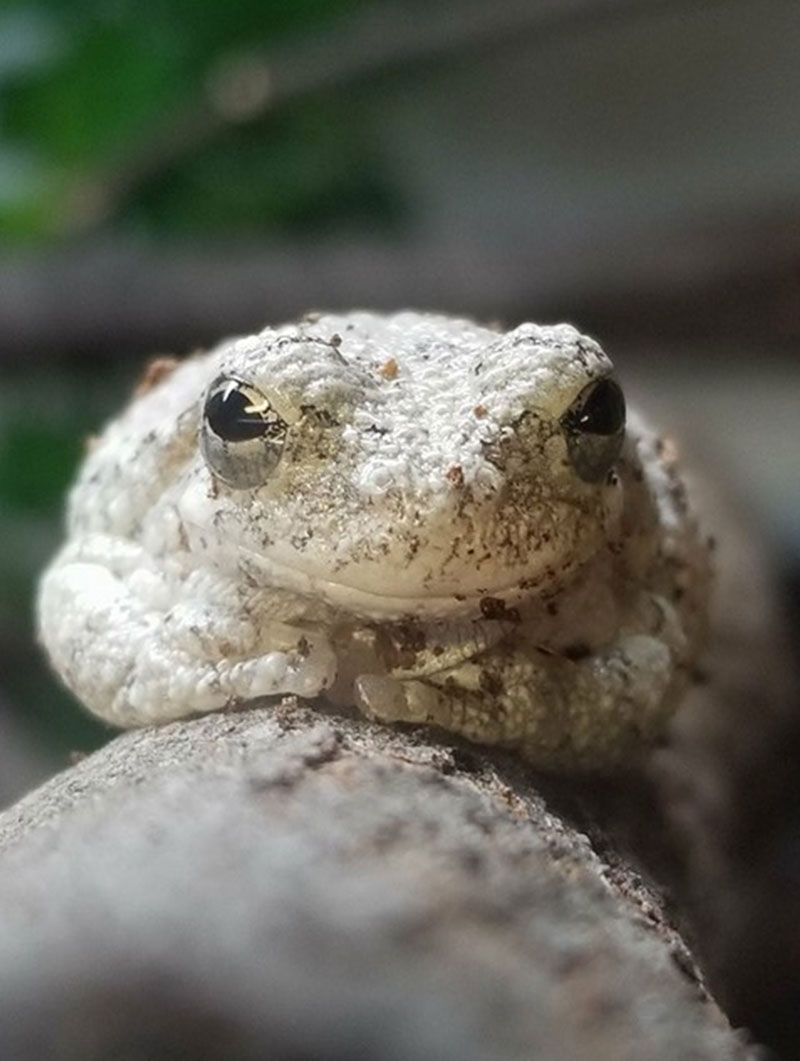Photo by Kmiecik Imagery
Grey Tree Frogs
Dryophytes versicolor
Description:
Grey tree frogs have rough skin and large, sticky toe pads. They range in color from green or brown to gray and adults have several large, dark blotches on their backs. There is normally a light spot under each eye. Male and female tree frogs are similar in appearance, except that the underside of the males’ chins is much darker.
Size:
Grey tree frogs are large for tree frogs at roughly 1.25-2.25 inches (3.2-5.2 cm) long. On average, they weigh about 0.25 oz (7.2 g).
Adaptations:
- As with other amphibians, grey tree frogs hatch from eggs, and then metamorphosize (change) from tadpoles to their adult forms.
- Grey tree frogs can change color to help them blend in with their environments.
- A tree frog’s sticky toe pads aid the frogs in climbing.
Diet:
Wild grey tree frogs find their food in the trees and shrubs they inhabit. They eat primarily insects, including moths, crickets, ants, and grasshoppers. At Cosley Zoo, the grey tree frogs are fed crickets and a vitamin supplement.
Reproduction:
Breeding season occurs from late April/early May through August each year. Grey tree frogs are polygamous, which means that they have different and potentially multiple mates each breeding season. The female lays between 1,000 and 2,000 eggs, choosing a pond that is relatively free of predators to lay them in. The adult frogs do not provide any parental care for the offspring.
Shelter and space needs:
Grey tree frogs live in wooded and forested habitats. They are both arboreal and terrestrial, which means that they spend time in the trees and on the ground. Because of their small size relative to other animals, grey tree frogs can hide in very small spaces, such as in tree holes, under bark, in rotten logs, and under leaves.
Life expectancy:
Grey tree frogs can live to be seven to nine years old, with an average of about seven years both in human care and the wild.
Relationship with man:
Grey tree frogs are beneficial to humans because they consume a substantial number of insect pests. As amphibians, grey tree frogs also serve as environmental indicators, with their presence often indicating a healthy ecosystem.
Fun Facts:
- The grey tree frog can survive the winter due to a chemical in its body that acts as an “antifreeze” and protects its organs from damage.
- Another species of tree frog, Cope’s grey tree frog, is identical in appearance to the grey tree frog. These species can be distinguished by their calls, which are very different from each other.






